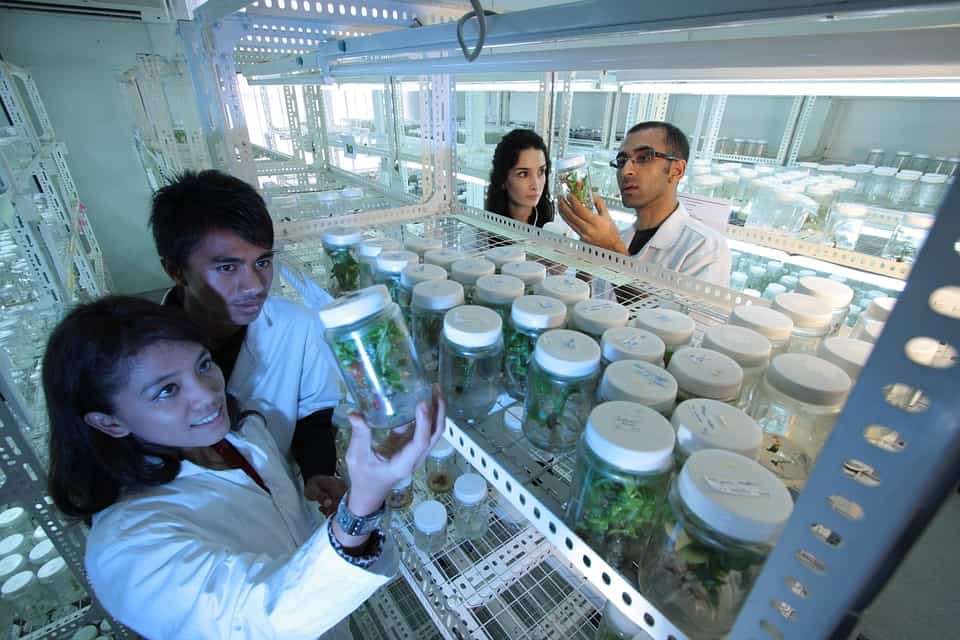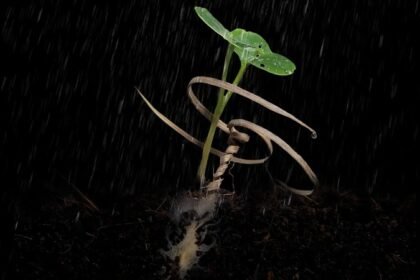Which technological advance allows people to enjoy grown and eat fresh vegetables even if they live thousands of miles away from the farms that produced them? The technological advance that allows people to enjoy fresh vegetables even if they live thousands of miles away from the farms that produced them is called Controlled Environment Agriculture (CEA).
The CEA includes a several different methods such as Hydroponics, Aquaponics, and Aeroponics that allow for the growth of plants in a controlled environment, typically indoors, using artificial lighting, temperature control, and nutrient management systems.
This technology allows for year-round production of fresh produce, regardless of weather conditions or location, making it possible for people to enjoy fresh vegetables even if they live far from the farms where they were grown.
What is Controlled Environment Agriculture (CEA)?
I am fascinated by Controlled Environment Agriculture (CEA) meaning and how it offers a new way of growing food. CEA is an advanced and intensive form of hydroponically-based agriculture where plants grow within a controlled environment, allowing for the optimization of natural processes and resource efficiency. It combines several key components, including air temperature and humidity, light intensity and spectrum, nutrient delivery, and water supply.
The technology-based approach of CEA allows growers/food producers and agri-tech businesses to optimize conditions to suit the specific needs of their crops. This means that plants can be grown in any location, regardless of climate or soil quality, while using fewer resources than traditional methods.
CEA is being adopted more and more as a sustainable alternative to traditional agricultural production methods, offering growers a range of benefits such as increased yields, higher quality products, reduced waste, and improved food safety. With the research and advancements to our methods continuing to evolve, I’m excited to see what the future holds for controlled environment agriculture!
Controlled environment agriculture (CEA) is a method of growing plants in a controlled environment, typically indoors, using artificial lighting, temperature control, and nutrient management systems. This technology allows for year-round production of fresh produce, regardless of weather conditions or location. CEA includes various techniques such as:
Hydroponics: Growing plants in water and mineral nutrient solutions, without soil.
Aeroponics: Growing plants in an air or mist environment, without soil or an aggregate medium.
Aquaponics: A combination of hydroponics and aquaculture, where fish waste is used as a natural source of fertilizer for the plants.

CEA allows for precise control of the growing environment, which can optimize crop yields and quality, conserve resources, and reduce the environmental impact of traditional farming methods. It is also known as indoor farming, vertical farming, or precision agriculture.
Which are The Three Key Components of CEA?
The three key components of controlled environment agriculture (CEA) are light, temperature, and carbon dioxide (CO2).
(1) Light is essential for any plant growth and development, and CEA allows growers to precisely control the amount of light that plants receive.
(2) Temperature is also important for plants; CEA provides a way to maintain an ideal temperature range while avoiding drastic fluctuations.
(3) Finally, CO2 plays an important role in photosynthesis, and CEA systems can be designed to ensure optimal levels of this essential nutrient.
By controlling these three components, it allows growers to increase crop yields while using less energy and resources than traditional farming methods.
CEA and Vertical Farming
Vertical farming is an efficient methods to grow crops in a controlled environment. It involves stacking plants horizontally or in tall towers through vertical space to maximize output. This type of vertical farming is is ideal for smaller spaces, as it requires far less land than traditional methods.
It’s possible to create a fully enclosed, climate-controlled environment that can be optimized for optimal crop growth. The technology also makes it easier to use natural resources such as sunlight and water more efficiently, resulting in higher yields with less waste.
CEA and Indoor Agriculture
With the increase in popularity of Controlled Environment Agriculture (CEA), the use of indoor agriculture is becoming increasingly common. Indoor agriculture is a type of CEA system where plants are raise in a fully-controlled environment that can be optimized for natural processes and resource efficiency.
This type of agriculture also offers many benefits, such as the ability to grow plants year-round, even in areas with short growing seasons or limited access to outdoor space.
Additionally, indoor agriculture can help reduce water and energy consumption, as well as provide a higher-yielding harvest due to increased control over the environment. Indoor agriculture is an innovative way to produce crops and has the potential to revolutionize how we grow food in the future.
The Growing Popularity
The agriculture method is getting attention of several farmers, consumers, and businesses. With the ability to control environmental factors, it allow producing a good quality and high-yield crops in a various climates.
This methods are beneficial in land where traditional farming is not possible due to climate or soil conditions. Additionally, CEA allows for efficient use of resources, faster crop cycles, and less waste.
As this technology continues to advanced, more people are becoming aware about the potential benefits of CEA and its growing popularity is evident.
Wrapping up
In conclusion, controlled environment agriculture is a revolutionary approach toward new way of farming that has the potential to revolutionize the way we produce food. This farming technique allows for year-round production of fresh produce, regardless climate or location, making it possible for people to enjoy eating fresh vegetables no matter how far from the farms where they were grown.
Enjoy reading this post? Follow our website for more fresh topics.








